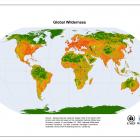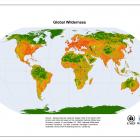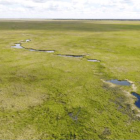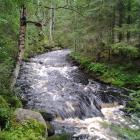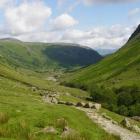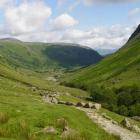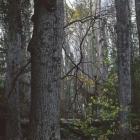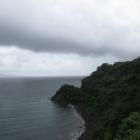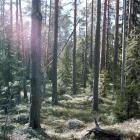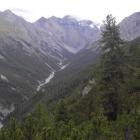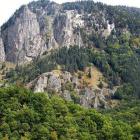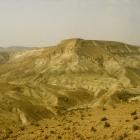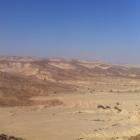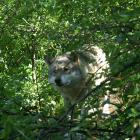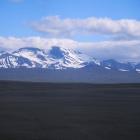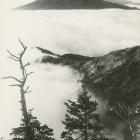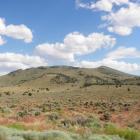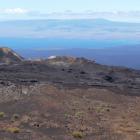Huāngyě—Chinese
In the Chinese language, there are no exact equivalents of the word “wilderness.” In modern Chinese, “wilderness” is commonly translated as 荒野 (huāngyě). 荒 (huāng) and 野 (yě) can be considered as synonyms, indicating places where plants and animals are not cultivated by humans. In modern Chinese, this has been extended to include places that have not been subject to human influence. Since land that has not been tamed by humans may threaten human survival, 荒野 has also adopted a connotation of savage, violent, and dangerous. 荒 and 野 can be separated and paired up with other words, such as 地 (dì [land], as in 荒地 [huāng dì] or 野地 [yě dì]) or 原 (yuan [plains or original], as in 原野 [yuan yě], 荒原 [huāng yuan]) to describe wild land, wasteland, or fields that are original or primitive. 旷野 (kuàng yě) and 蠻荒 (mán huāng) are also sometimes used to describe wilderness. They convey additional connotations of vastness and spaciousness (旷 kuàng) and being savage and uncivilized (蛮 mán). With 自然 (zìrán) being the standard translation of “nature,” the phrase “wild nature” is often translated as 野性自然 (yěxìng zìrán) or 原始自然 (yuán shǐ zìrán); the first translation conveys the essence of not being domesticated while the second captures the sense of being original or primitive.
Wild and Free
There have been few systematic investigations of the relationship between Chinese culture and wilderness but scholars in the twenty-first century have often associated classical Chinese “mountains and rivers” (山水 shan shui) poetry with wilderness appreciation. 山水 poetry originated in the third and fourth centuries CE. In such poems, wild nature functioned as much as a symbol as a concrete locality. They conveyed how poets wished to return to their original “wild” roots, where they could express their freely flowing emotions, sense their interdependence with all land and nature, and live their freedom and wildness away from the bondage of society. The mountain and river landscapes were depicted as sites of raw, original nature—not horrific landscapes of danger and violence, but places where one could sense the ubiquitous spirit in nature and pursue one’s spiritual enlightenment.
Wild and Frightful
Outside 山水 poetry, wild nature was often depicted as frightful and treacherous. In poetry dating from around the second century BCE, wild animals and plants, hostile conditions, and barbarians made wild nature highly undesirable compared to the comforts of the city and human civilization. Nearly two thousand years later, in the seventeenth century CE, Chinese travelers to the newly annexed island of Taiwan also considered the impenetrable mountains, dense forests, and uncultivated lands to be worthless compared to comforts of their hometowns. The new island lay far away from the imperial center, in a region of 荒 (huāng), which was considered to be cultureless, savage, and chaotic. Given China’s history as an agricultural nation, its ancient laws have always sought to promote the expansion of agriculture into hitherto uncultivated land. Only land that was tamed and shaped by humans could become productive or beautiful. Around the same period, the northeastern corner of China was coined the “Great Northern Wilderness” (北大荒 běi dà huāng). Migration into the region from the south was prohibited by imperial rule. The region was preserved as a private royal park, a storehouse of wild game and plants for consumption by the imperial court. Population was kept low and agriculture was not developed. In the late nineteenth century, it was still described as an unfortunate land of bleak desolation due to the absence of human settlement.
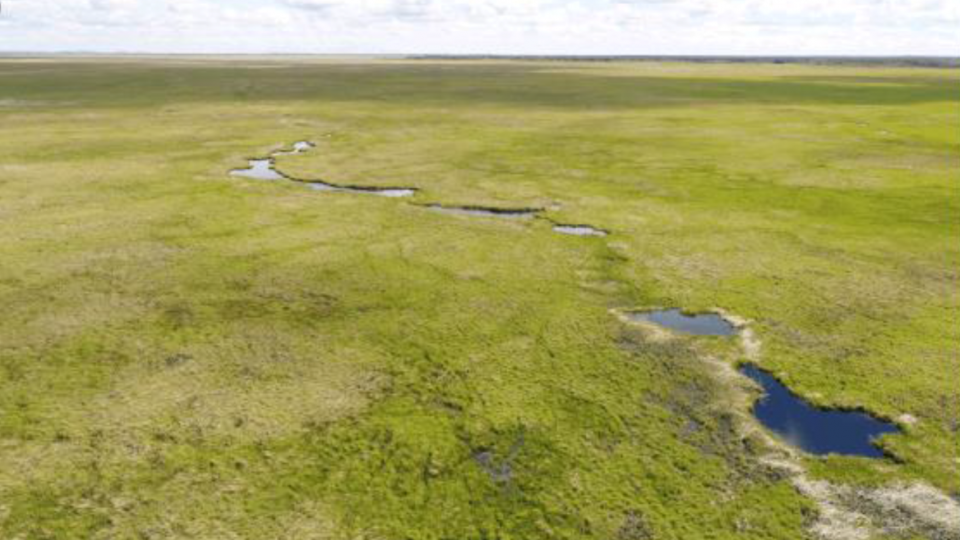
The “Great Northern Wilderness” encompassed vast areas in northeast China, including the wetlands of the Sanjiang Plains. Photograph by W. C. Zhang, n.d.
The “Great Northern Wilderness” encompassed vast areas in northeast China, including the wetlands of the Sanjiang Plains. Photograph by W. C. Zhang, n.d.
© W. C. Zhang.
Used by permission.
The copyright holder reserves, or holds for their own use, all the rights provided by copyright law, such as distribution, performance, and creation of derivative works.
Hostile and Desolate; Beautiful and Pure
In modern times, Chinese people continue to bring their perceptions of wilderness with them in their engagements with wild nature outside their homeland. Research has shown that Chinese immigrants to the USA are generally less likely than white Americans to visit a federally designated wilderness area or to go hiking and camping. To first- and second-generation Chinese immigrants settling in Vancouver, Canada, wilderness is often associated with places that are barren, desolate, hostile, undesirable, and abandoned. Immigrants from cities in China find the wide open spaces of the Canadian wilderness overwhelming. Their lack of familiarity with such spaces and lack of skills for wilderness survival make them fearful towards wilderness. Immigrants from rural China associate wilderness with the impoverished countryside in China where they (or their family members) walked, worked, and slept outdoors as a matter of toil and survival and not of spiritual escape or choice. Traveling to Antarctica, one of the world’s largest wildernesses, Chinese tourists also bring with them their perception of wilderness as lifeless, hostile, and desolate—where humans cannot live and rarely visit. However, once there, they marvel at the abundant wildlife and beautiful scenery and support the idea of protecting Antarctica as a wilderness reserve where the development of infrastructure is limited. Nonetheless, they are more at ease at referring to Antarctica as “pure land,” instead of as wilderness. “Pure land” is also the name of a branch of Buddhism popular in Asia and is often understood as the land of bliss or enlightenment. Through their experiences with wilderness outside their homeland, some Chinese people have the opportunity to engage with alternative perceptions of wilderness.
Future Opportunities and Evolution
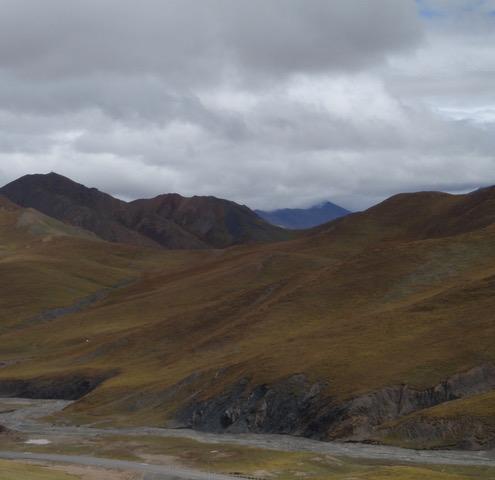
The Qinghai-Tibet plateau situated in the western part of China has high remoteness, high naturalness, and very low population density. Photograph by Tanya O’Neill, n.d.
The Qinghai-Tibet plateau situated in the western part of China has high remoteness, high naturalness, and very low population density. Photograph by Tanya O’Neill, n.d.
© Tanya O’Neill.
Used by permission.
The copyright holder reserves, or holds for their own use, all the rights provided by copyright law, such as distribution, performance, and creation of derivative works.
Rapid industrialization in the late twentieth and early twenty-first centuries in China has raised the standard of living of its citizens. Yet, it has been accompanied by pollution, deforestation, desertification, and other environmental and public health problems, which have, in turn, combined to bring about greater state-led and citizen environmentalism. Since 2007, the Chinese government has been incorporating the idea of “ecological civilization” into the country’s development strategies, with the goal of building a harmonious co-existence between economic development and nature conservation. Writings about nature and environmental concerns have flourished. At the beginning of the twenty-first century, novels focusing on the relationship between humans and wolves in the wild became bestsellers and won widespread acclaim. The academic fields of ecocriticism and environmental ethics have matured since their beginnings in the 1970s and 1980s. After having focused on interpreting theories developed by authors from Western countries, including those concerning wilderness protection, scholars are now developing concepts applicable to the specific situations occurring in China. There have also been calls for further research into the social, cultural, and geographical aspects of wilderness in China and the feasibility of the establishment of a Chinese wilderness preservation system. If wildness were to be measured by the metrics of remoteness and naturalness and population density, then the wildest parts of China can be found in the western part of the country on the Qinghai-Tibet plateau. At an average elevation of 4,000 meters above sea level, the Qinghai-Tibet plateau is the highest plateau in the world, supporting a range of ecosystems, including alpine shrubland, meadow, steppe, and desert. Humans settled permanently in the region more than 3,600 years ago. Parts of the plateau have been designated as nature reserves. Hoh Xil nature reserve was inscribed on UNESCO’s World Heritage List in 2017.
The history of wilderness protection follows a similar trend in different countries. At the beginning, wilderness was often considered as undesirable or as wasteland by the first settlers. Public opinion started to change when the human footprint expanded so much that wilderness became a rarity, a commodity that was worth valuing. Is it possible that the Chinese people are following a similar trajectory? Only time will tell. With a population of 1.4 billion living in China and an estimated 50 million ethnic Chinese people living outside of China’s mainland, it is likely that Chinese people hold many different perceptions of wilderness that have emerged from their personal and collective experiences and cultural influences. In an increasingly globalized world, as information becomes more easily accessible, and as people have more opportunities to meet and work with other cultures, new pathways may open for the evolution of perceptions of wilderness.
What does wilderness mean in your language? Browse “Wilderness Babel” via the map.
Live map showing the location of the languages featured in the virtual exhibition. What does wilderness mean in your language? Browse “Wilderness Babel” via the map.
- Cao, Yue, and Yang Rui. “中国荒野研究框架与关键课题” [The research framework and key issues of Chinese wilderness studies]. Chinese Landscape Architecture 33, no. 258 (2017): 10–15.
- Chen, Hao, Wanchang Zhang, Huiran Gao, and Ning Nie. “Climate Change and Anthropogenic Impacts on Wetland and Agriculture in the Songnen and Sanjiang Plain, Northeast China.” Remote Sensing 10, no. 3 (2017): 356. doi:10.3390/rs10030356.
- Shan, Patrick Fuliang. Taming China’s Wilderness: Immigration, Settlement and the Shaping of the Heilongjiang Frontier, 1900–1931. Burlington: Ashgate Publishing, 2014.
- Tin, Tina, and Yang, River. “Tracing the Contours of Wilderness in the Chinese Mind.” International Journal of Wilderness 22, no. 2 (2016): 35–40.
- Wang, Hui. 荒野哲学与山水诗 [The wilderness philosophy and the landscape poetry]. Shanghai: Academia Press, 2010.



